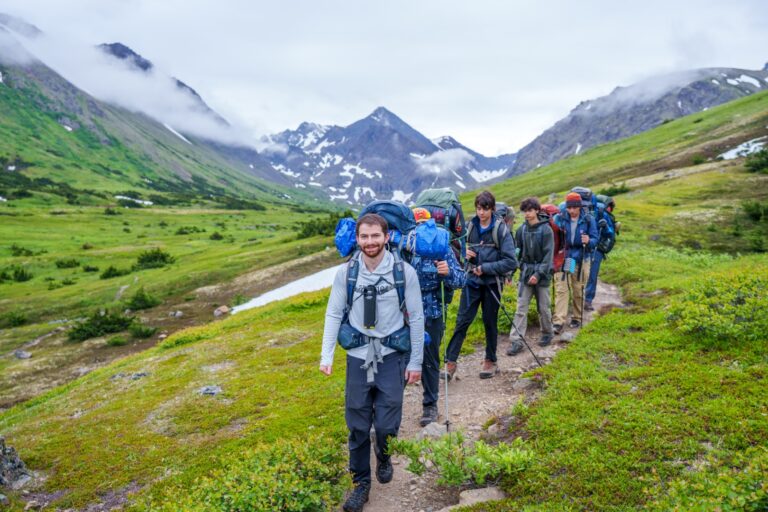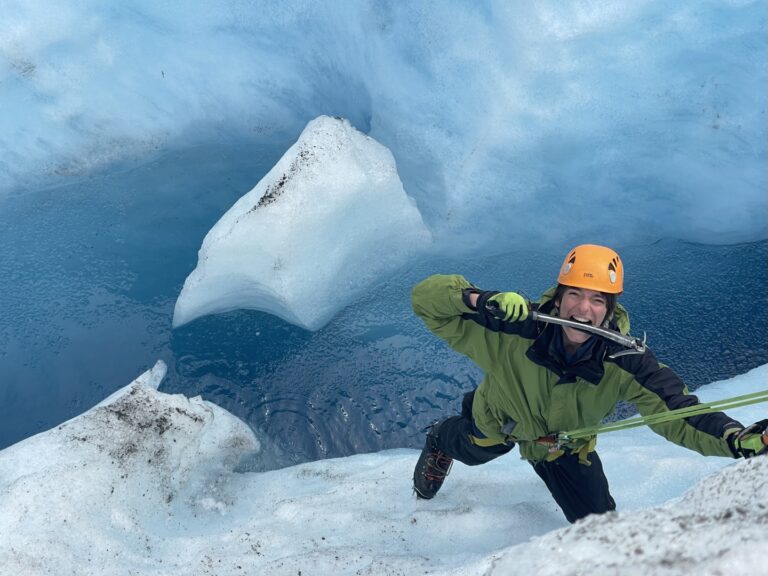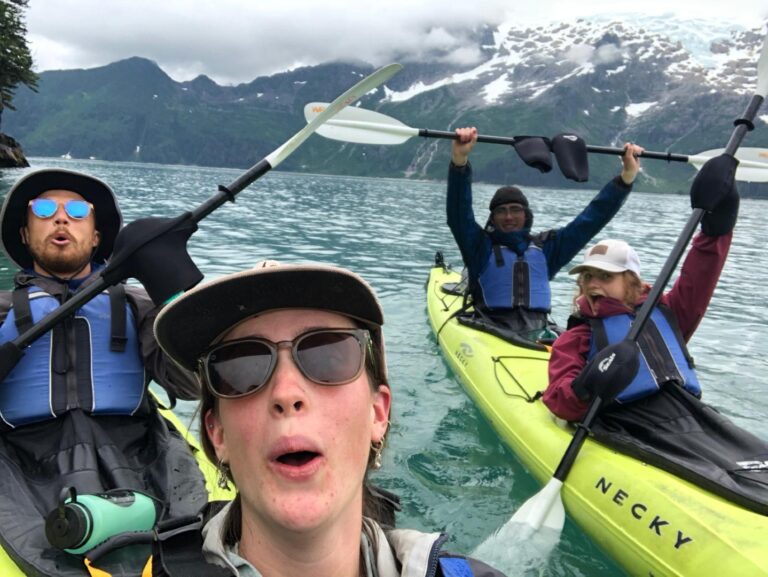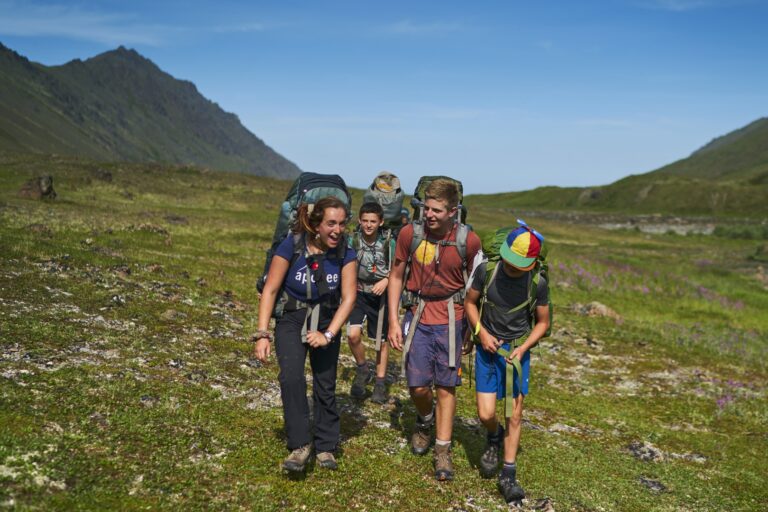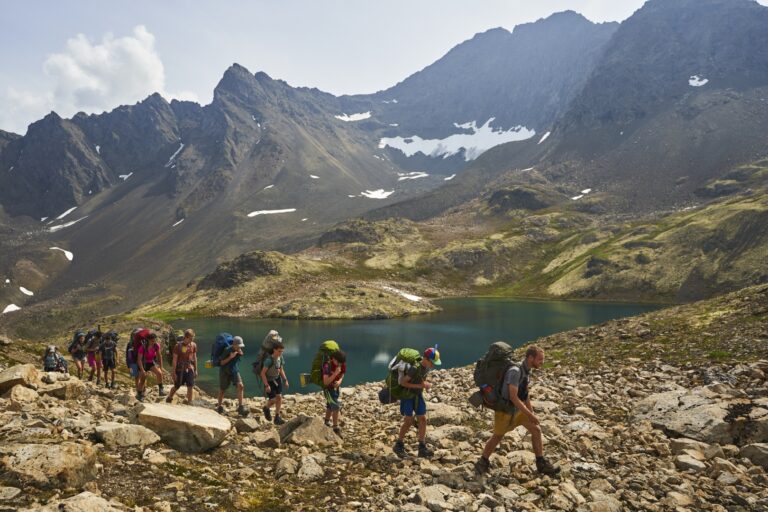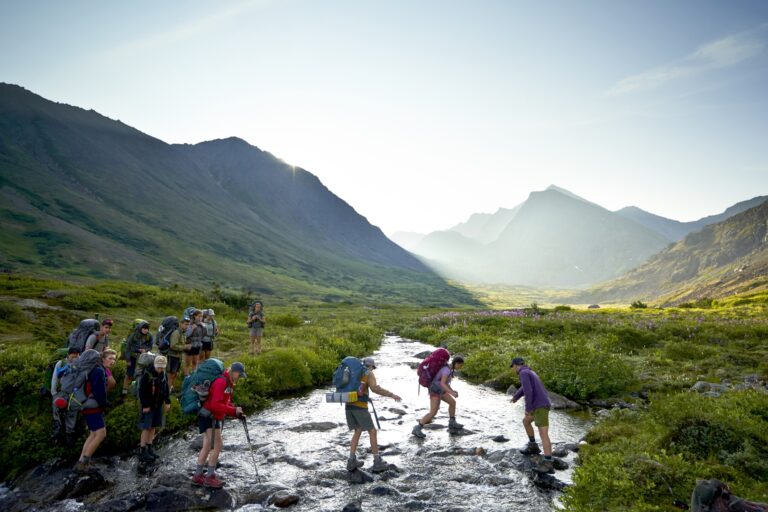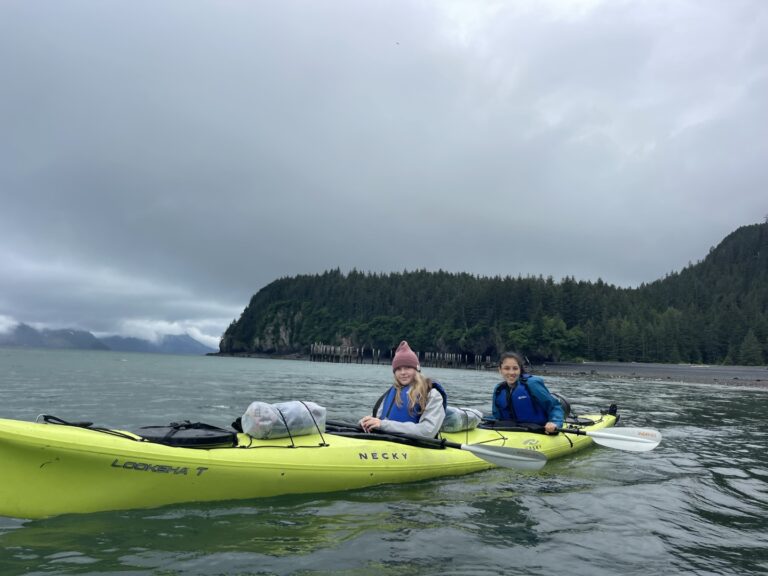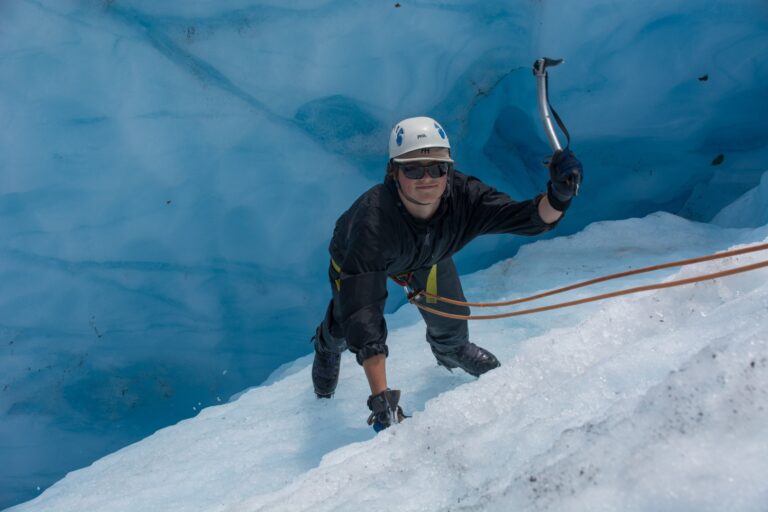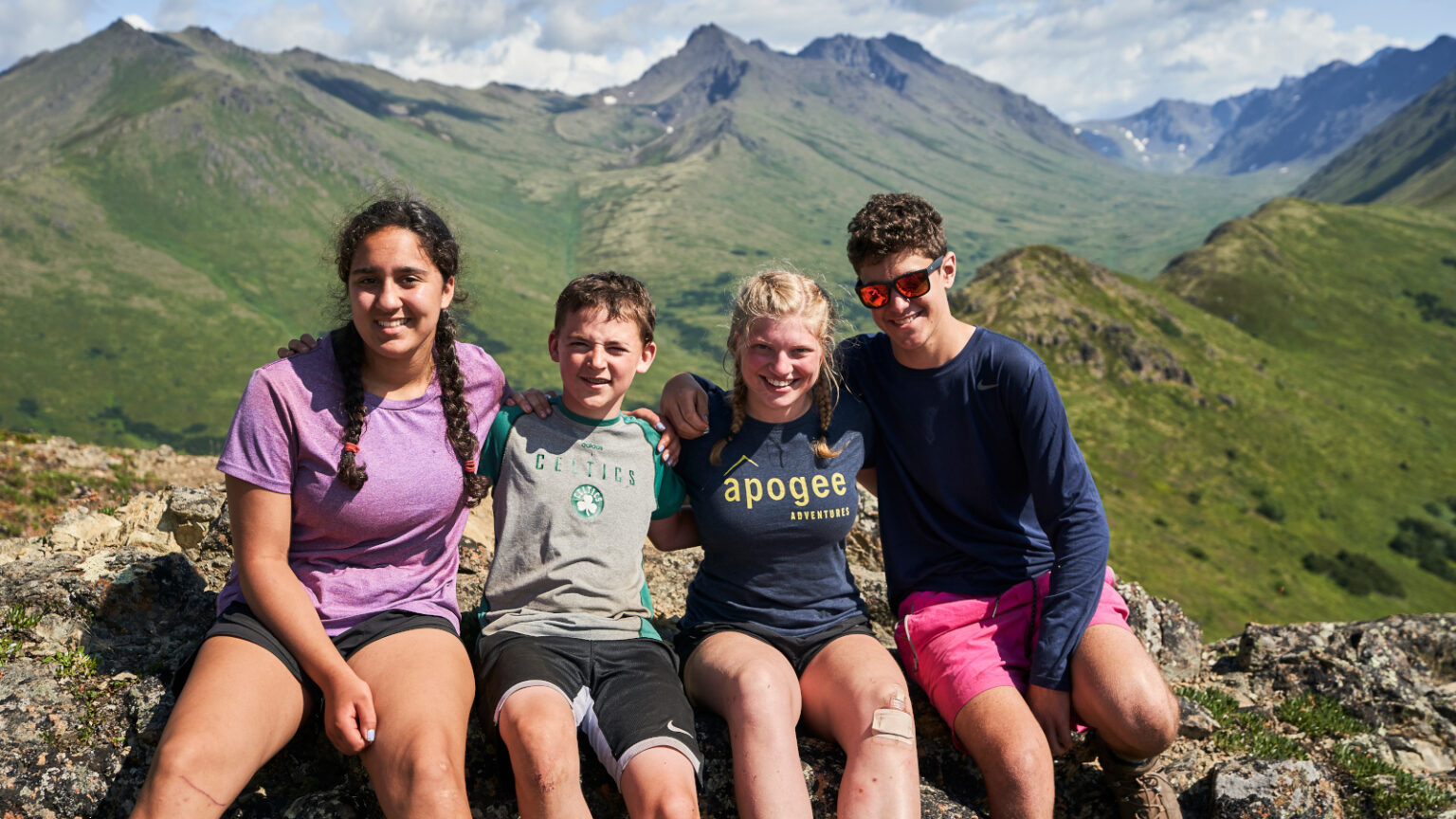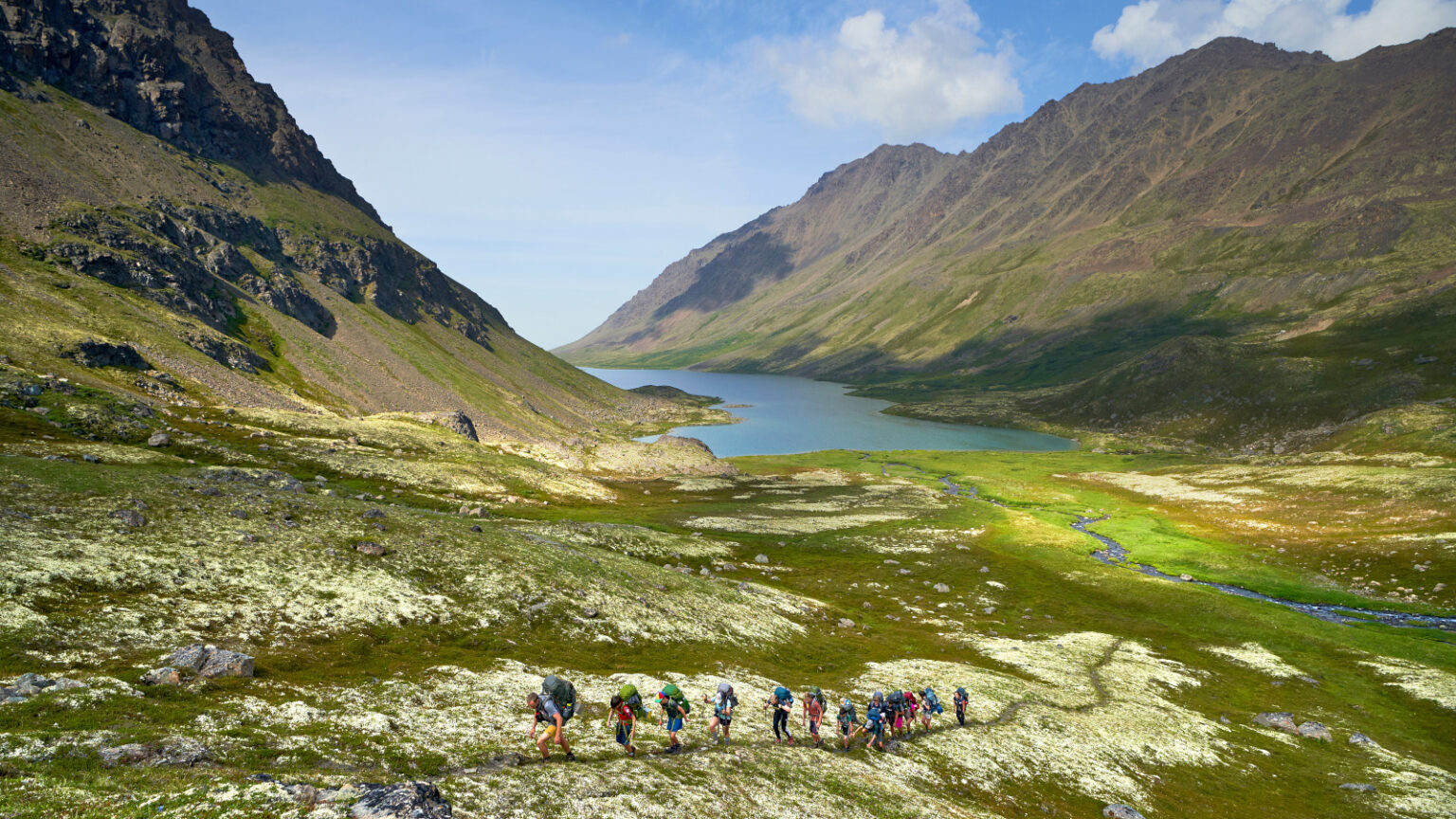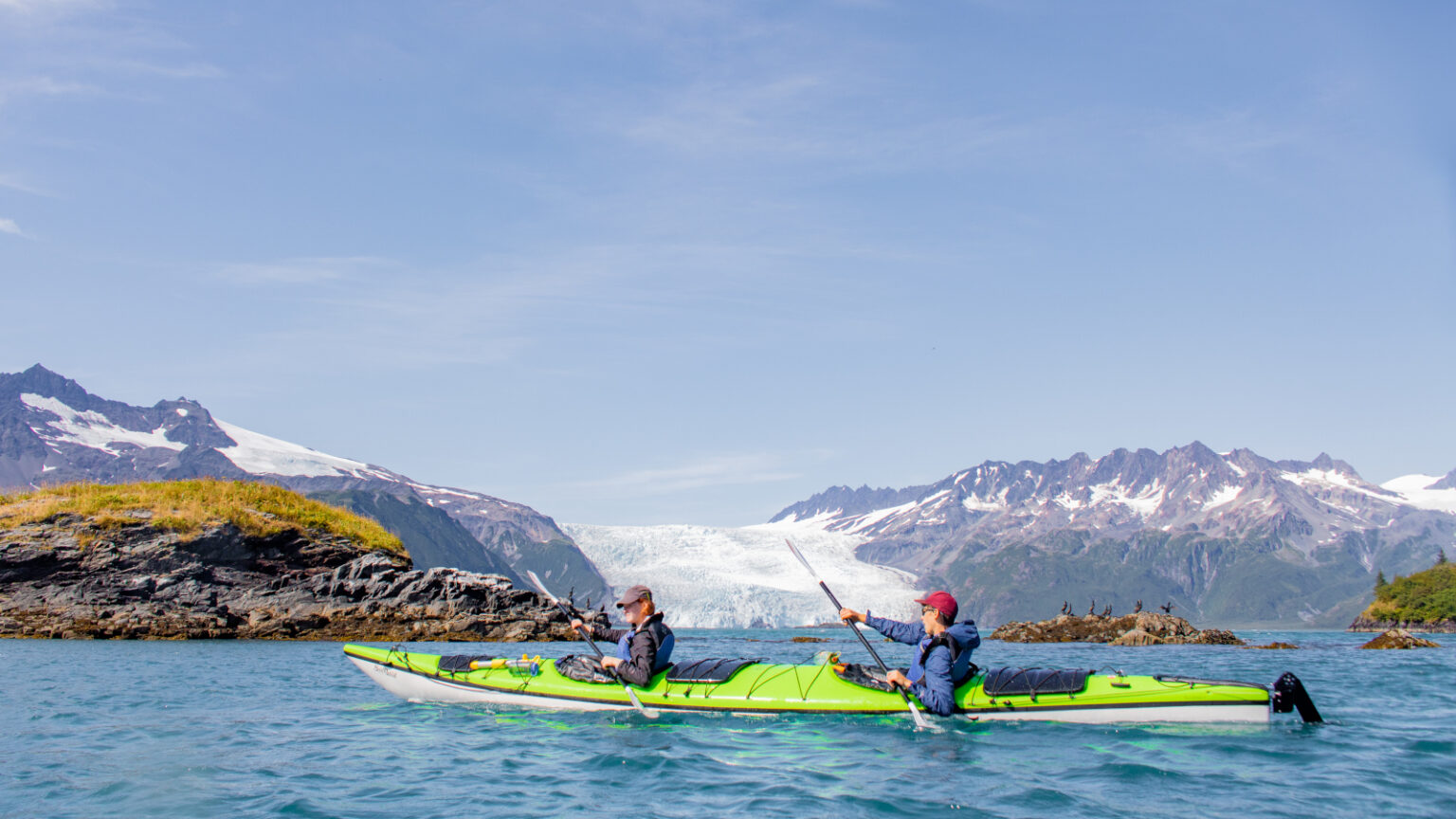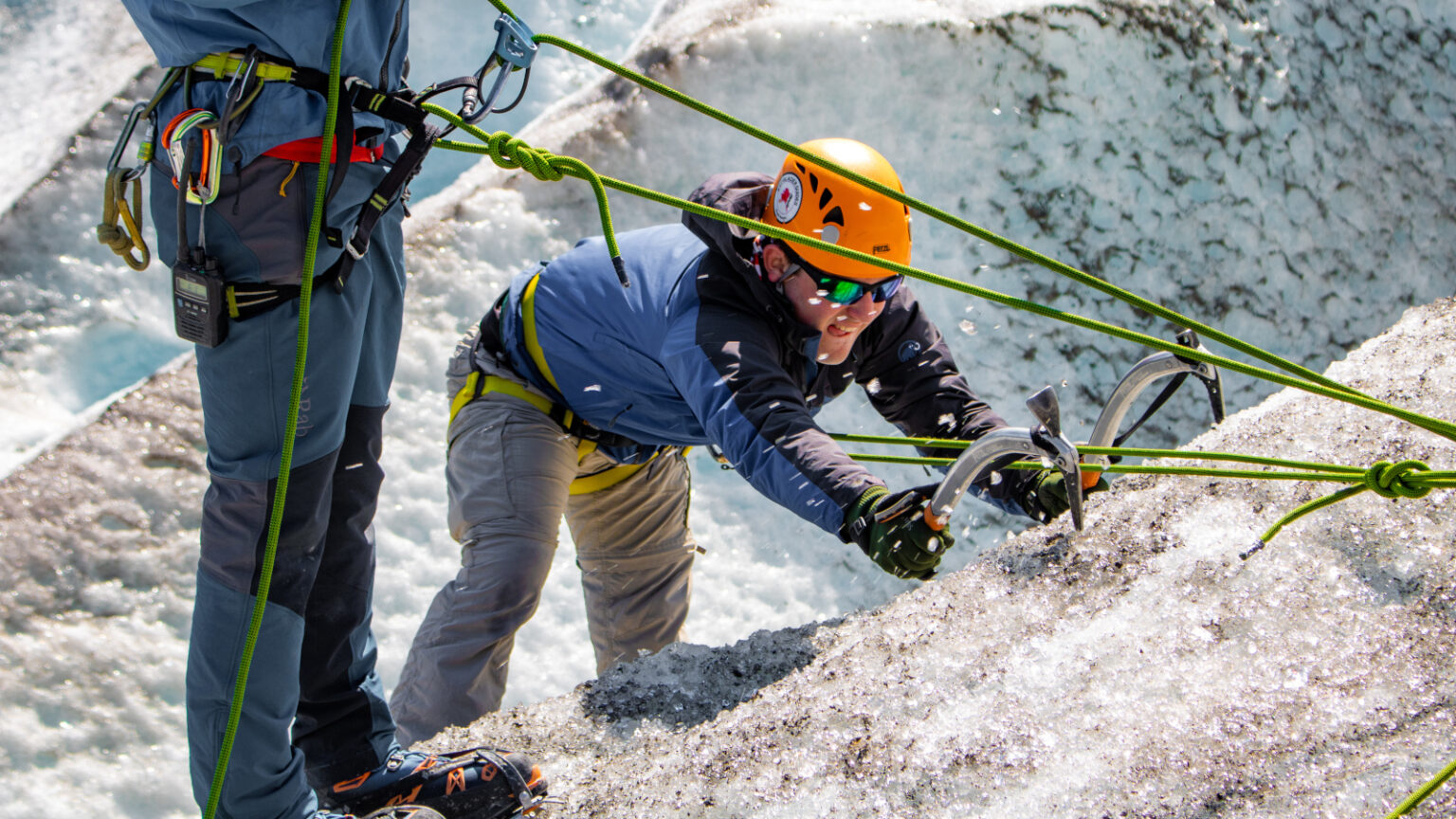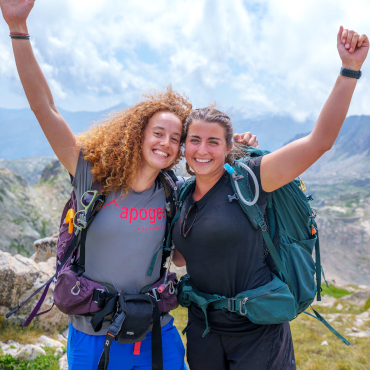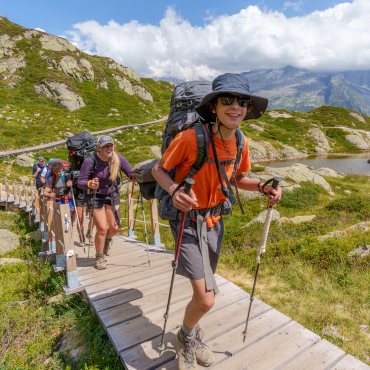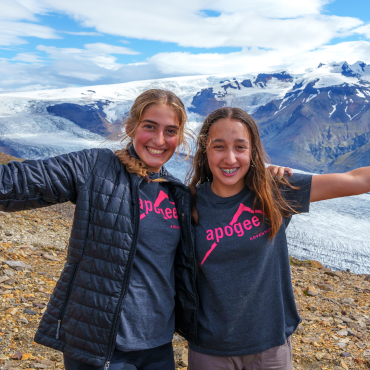Highlights
- Hike & backpack Chugach State Park
- Sea kayak in a glacial fjord with otters, seals, eagles, and whales
- Glacier hiking and ice-climbing with professional guides
- Volunteer with a local community group
- Explore & celebrate in Anchorage, Alaska
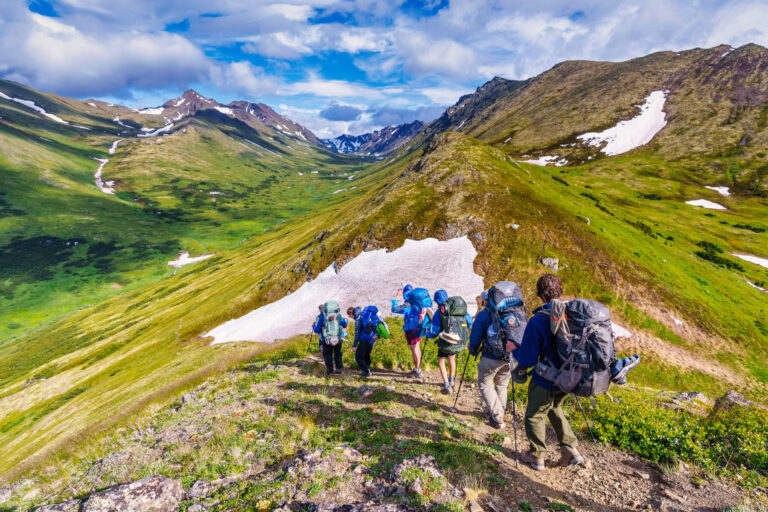
Trip Details
- Start: Anchorage, AK, USA
- End: Anchorage, AK, USA
- Age Range: 14 - 16
- Cost: $5,099
Dates
Jun 28 - Jul 9 (Available)
Jul 13 - Jul 24 (Available)
Jul 28 - Aug 8 (Available)
Trip Itinerary
Just the word Alaska brings to mind images of snow-capped peaks, glaciers, and untouched wilderness. You’ll get that – and more – over the course of this 12-day summer adventure program. Four times larger than California with a population about half the size of Maine’s, Alaska is an outdoor-lover’s paradise. We’ve designed Alaska Mountains & Coast specifically for the teen adventurer looking to strike the perfect balance of stunning backpacking in the Chugach Mountains, idyllic sea kayaking through coastal fjords, and awe-inspiring glacier hiking and ice climbing on the legendary Exit Glacier. Whether you have lots of outdoor experience or are just excited to explore “The Last Frontier”, there’s no shortage of adventures to be had.
Hiking & Backpacking Chugach State Park
On arrival, we’ll head straight from the Anchorage airport to the nearby Chugach State Park – the third largest State Park in the country. Over the next several days, we’ll hike and backpack the Chugach Mountains, taking in panoramic views of the Tordrillo and Talkeetna Mountains, and, of course, (hopefully!) Denali, the highest mountain in the United States. Our trails will lead us through glacier-cut valleys, we’ll sleep on the shores of pristine backcountry lakes, and we’ll keep our cameras at the ready for moose, mountain goat, and Dall sheep sightings. After three nights in the Chugach backcountry, we’ll transit to our next basecamp in coastal Seward.
Sea Kayaking Resurrection Bay
Next, we’ll meet our professional sea kayaking guides for two action-packed days of paddling through the stunning fjords of Resurrection Bay, highlighted by a hike to an old military fort on the side of stunning Callisto Peak. We’ll paddle from Lowell Point to Caine’s Head and along the way, watch for playful sea otters and seals, as well as soaring eagles and puffins. We’ll spend the night camping on a beach under the stars, lulled to sleep by the bay’s quietly lapping surf. On our paddle back to Seward, we might even be lucky enough to spot humpback or orca whale in the distance!
Exit Glacier Hiking & Ice Climbing
Returning to Seward, our final adventure will bring us to the Antarctica-like landscape of Exit Glacier, one of the most notable glaciers branching from the Harding Icefield, the largest icefield contained in the United States. After a gorgeous warm-up hike to our entry point onto the glacier, our professional guides will provide crampons and other safety equipment, along with a detailed safety briefing, before we head onto the ice. In addition to exploring the various features of the glacier by foot, we’ll also have an opportunity to ice climb out of the crevasses. After our day on the glacier, we’ll spend our last full day together working on a service project with a local organization before celebrating our two weeks of adventures in Anchorage.
Reviews
Frequently Asked Questions
Please see our General FAQ page for many more frequently asked questions and answers!
How physically challenging is AKMC?
Given a rating of Challenge Level 5 (out of a maximum of 10), we consider AKMC to be a intermediate hiking trip that any moderately fit, motivated student can successfully complete with some prior preparation. Compared to similar hiking trips, we believe that AKMC is slightly more challenging than Maine’s Downeast Explorer (mostly due to the extended backcountry portion and slightly longer mileage), but easier than Pyrenees Mountains & Coast. Please note that all of Apogee’s Challenge Levels are not scientific and are subjectively calculated by the Apogee staff.
Where will my child be sleeping on this trip?
Our AKMC groups will be camping every night over the course of our trip; we will spend eight nights in established, front country campsites, and four nights in the “backcountry” (one night kayak camping and three nights backpacking). Leaders will separate students by gender into tent groups, and will rotate those groups several times over the course of our trip. Students will share a tent with one or two other students.
What is the maximum number of students I can expect on my child’s Apogee trip?
There are never more than ten students on an individual session of this trip. Additionally, we limit enrollment by gender to two-thirds/one-third. Groups are always led by two qualified leaders.
What is the difference between front country and backcountry hiking? What will the backcountry portion of AKMC be like? How much weight will my child carry during this portion?
Generally speaking, the front country is any area that is easily accessible by vehicles and day users. Hiking in the backcountry, on the other hand, involves hiking and camping in more remote locations without running water or immediate access to advanced medical care. Hiking and camping in the backcountry requires more preparation because of the need to carry in all food and equipment, and treat drinking water prior to consumption. Our AKMC trip has two backcountry portions: one backpacking trip in Chugach State Park (a two-night trip) and an overnight sea-kayaking expedition in Resurrection Bay. Your child should expect to carry somewhere between 20 and 35 pounds in their pack during this backcountry section.
Are bears and other wildlife a factor in Alaska?
We hope that seeing wildlife will be a major highlight of our group’s time in Alaska, but we also need to give wild animals the respect and distance they deserve. We want to minimize the chances of surprising a bear or moose when we’re on the trail or attracting them to our campsites. To do so, we’ll make lots of noise on the trail (something that’s easy for a big group like us!), properly store our food in camp, and avoid any campsites and trails with recent signs of bear activity. Our leaders are trained in wilderness skills and wildlife protocol and will instruct our students on proper protocol, too. You should know, too, that our leaders will be carrying bear spray in the unlikely event of an unintended bear encounter.
What does the community service portion of this trip entail?
The specifics of our community service projects and the number of hours we volunteer might vary slightly, but we plan on working with a local land trust or community organization on a variety of tasks including seed spreading, invasive species removal, and trail maintenance. Students can expect 3-5 hours of community service work, usually over the course of one day.
How will I communicate with my child while they are on this trip?
We are a technology-free program, meaning that your child won’t have access to their phone or other electronics over the course of their trip. We have one email stop on our Alaska Mountains and Coast program; parents, relatives, and friends are welcome to use this to send messages to our office, which will be forwarded along to the group on a designated “email day.” If you have an urgent message to get to your child, please call our office and we’ll work to get you connected with your child.
My child will be flying to this trip start. How will they connect with their leaders?
Please note that Apogee staff members do not travel with students; our trip leaders will already be in Anchorage on arrival day and will stay in Anchorage after the trip ends. Apogee staff and trip leaders will have a detailed flight itinerary for each student who is flying to the trip start and will be at the airport to greet them on arrival. Once students are with their leaders, they will call home to let their parents know they have arrived and are with their group. Please see our blog post for specifics regarding students traveling as Unaccompanied Minors. Further, we encourage you to coordinate travel with other attendees; we’re happy to put you in touch with other enrolled families from your region. We will provide enrolled families with a Travel Information document covering details specific to traveling to and from Anchorage, including airport information and arrival and departure time windows. Please contact Apogee with any specific questions or concerns regarding drop-offs and/or pick-ups
Aside from the trip cost, what are the additional expenses for this trip?
Apogee’s tuition costs are meant to be all-inclusive and include all meals, accommodation, and activity fees. The most significant additional expenses on our Alaska Mountains & Coast trip will include travel to and from Anchorage, AK, hiking boots, sleeping bag and pad, and personal gear. We suggest that you review the packing list (downloadable on this webpage) to determine what personal gear you already own and what you might need to acquire for this program. Please also check out our Gear Recommendations blog post for links to our personal recommendations.
